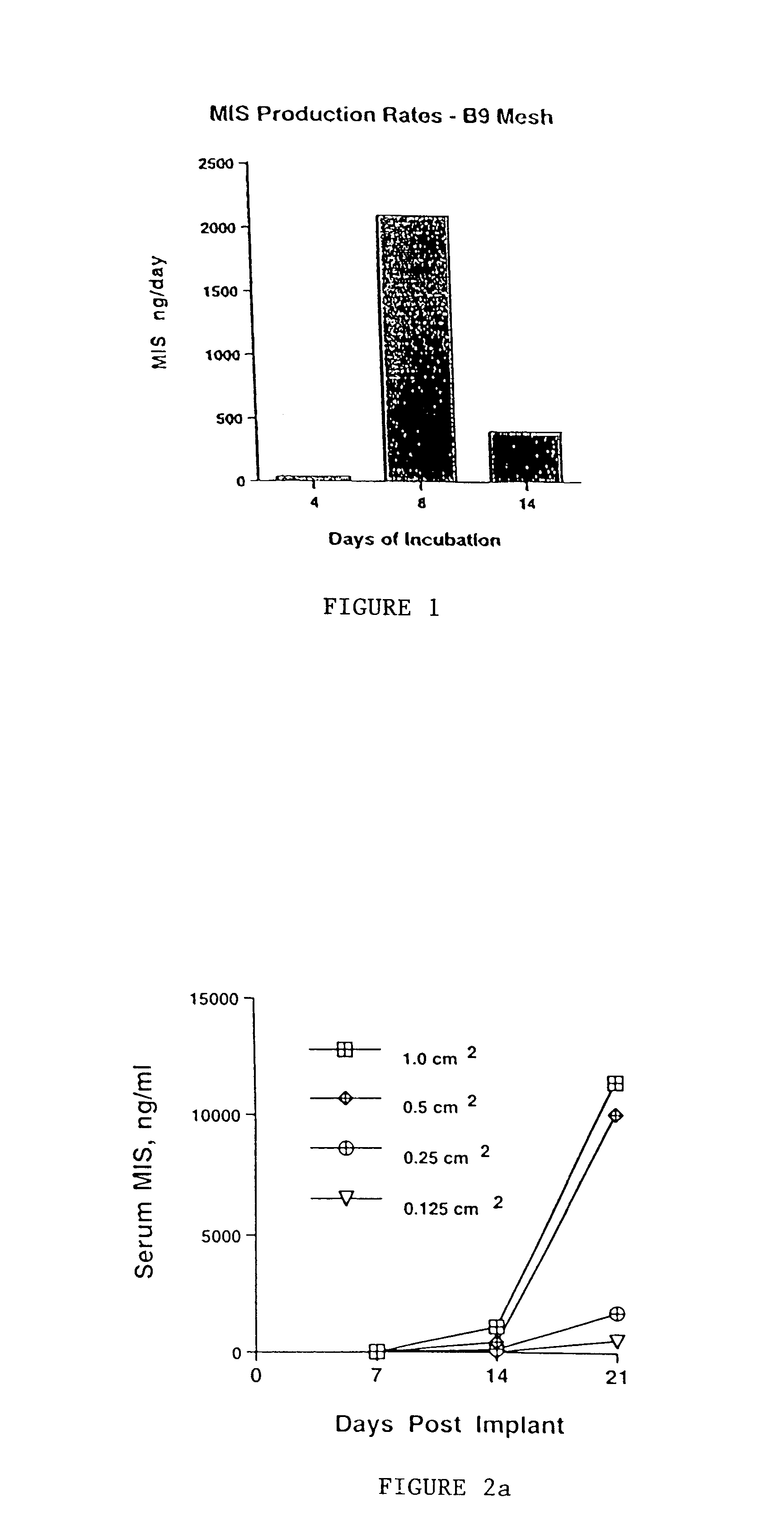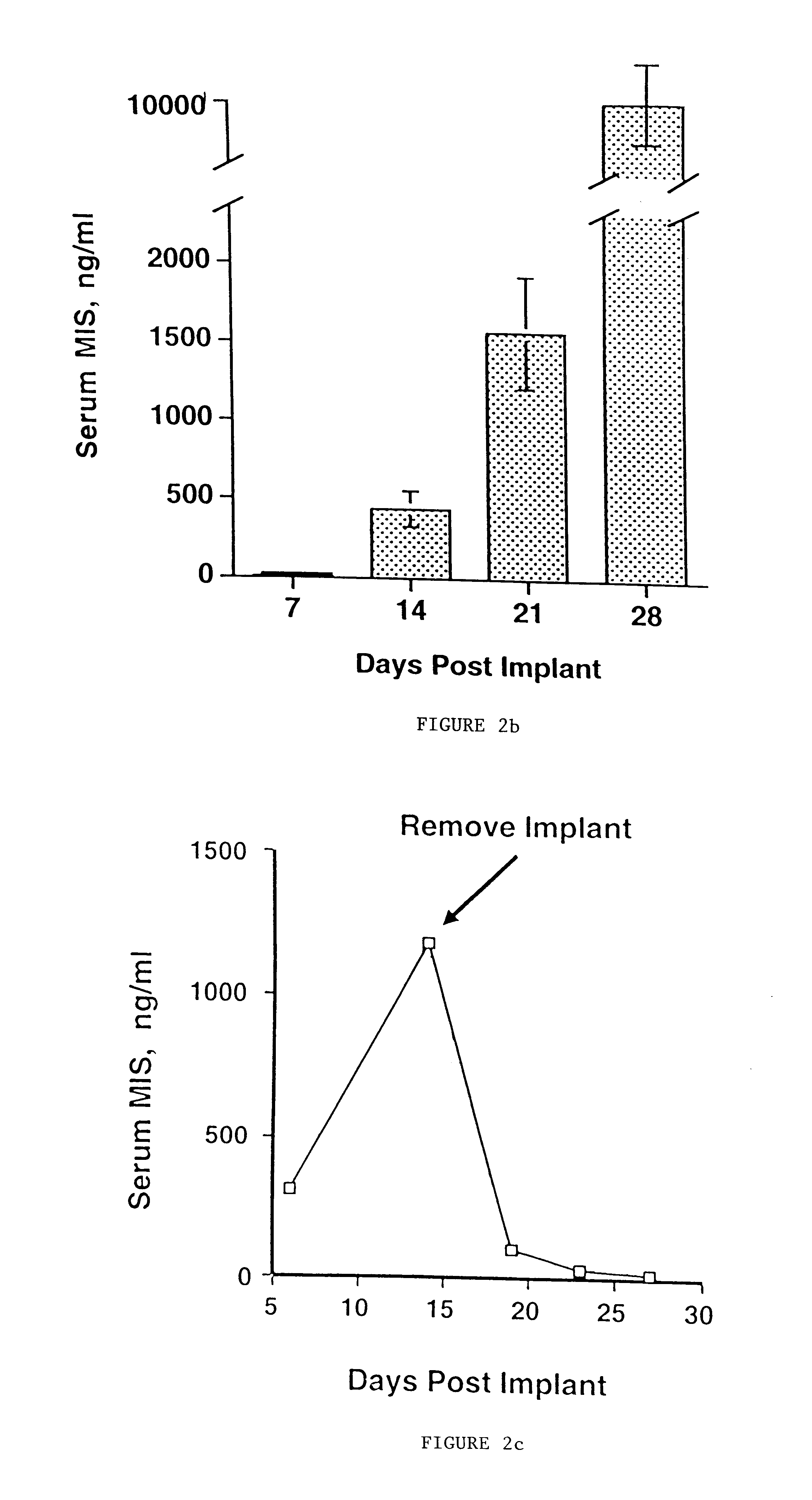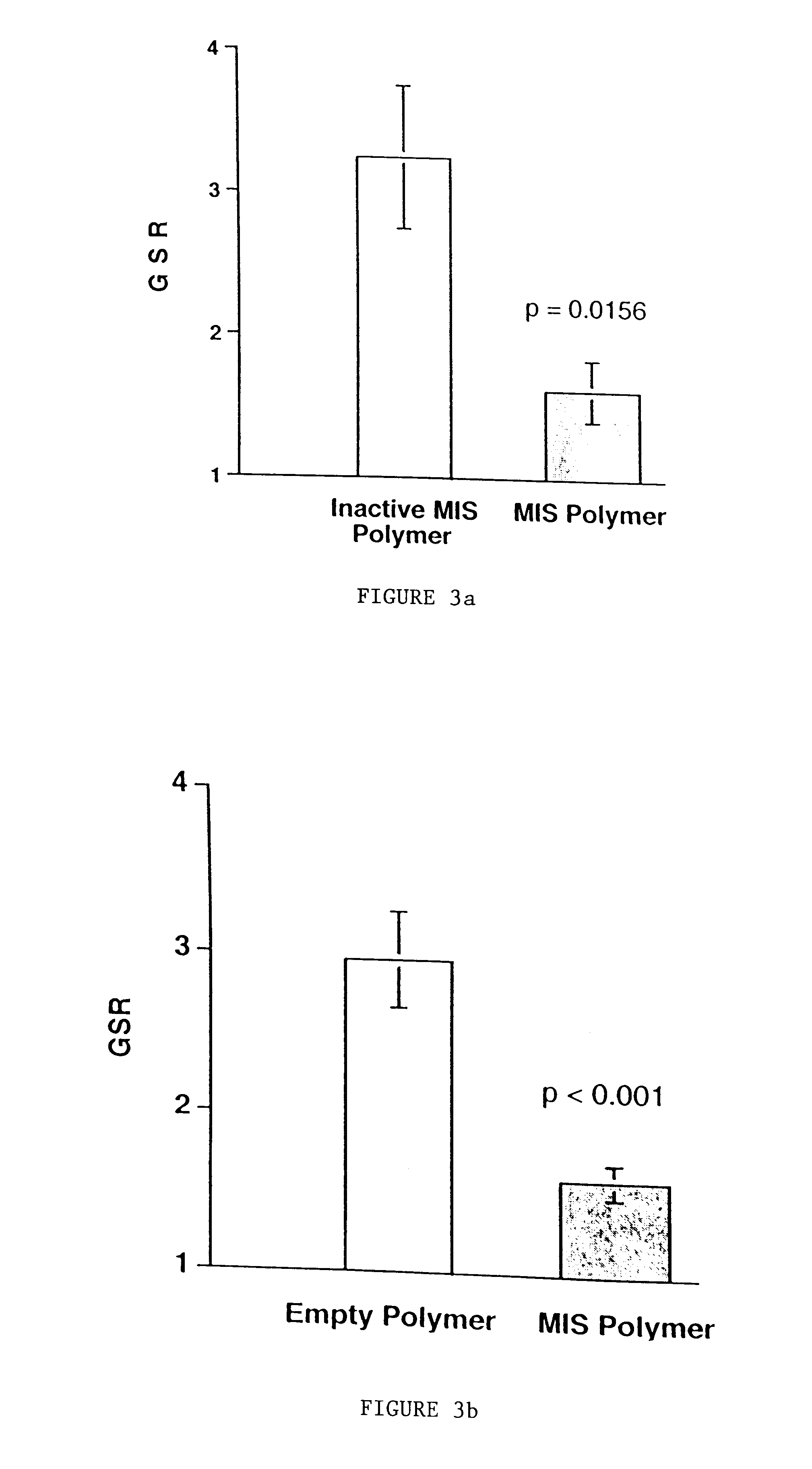Delivery of therapeutic biologicals from implantable tissue matrices
a technology of implantable tissue and biologicals, which is applied in the direction of skeletal/connective tissue cells, genetically modified cells, peptide/protein ingredients, etc., can solve the problems of inability inability to conduct clinical trials for cancer treatment, and inability of developers to produce large quantities of peptides
- Summary
- Abstract
- Description
- Claims
- Application Information
AI Technical Summary
Benefits of technology
Problems solved by technology
Method used
Image
Examples
example 1
Production of MIS in CHO Cells In Vitro
Materials and Methods
Polyglycolic acid fibers (approximately 12 microns diameter) obtained from Albany International were cut into 0.5.times.0.5 cm squares. 1.times.10 10.sup.6 CHO B9 cells are seeded onto the mesh by the static seeding method. After 4 hours, the mesh was transferred into a new dish containing 10 ml of fresh media. Media MIS concentration was measured serially over seven days by ELISA. Another CHO cell line, CHO L9, which is transfected with a mutated rhMIS gene that produces non-cleavable bioinactive protein, was placed on the mesh as a negative control for the implant experiments. Samples were also placed in the organ culture assay to determine MIS bioactivity.
Results
In preliminary in vitro experiments, CHO B9 cells seeded onto a polyglycolic acid matrix produced large (i.e. microgram) quantities of bioactive MIS as determined by ELISA (Hudson et al., J Clin Endocrinol Metab. 70: 16-22, 1990) and by a standard organ culture b...
example 2
Regression of Tumors by MIS-producing Cells Seeded onto Polymeric Matrices Implanted into Animals
As described in Example 1, in vitro CHO cells transfected with the human MIS gene were seeded onto a polyglycolic acid matrix and produced large quantities (micrograms) of bioactive MIS as determined by ELISA and by a standard in vitro organ culture bioassay. A production rate of 400 ng / day / device was determined, corresponding to a production rate per cell of 3 pg / cell / day. By serial sampling it was determined that 7-8 days incubation produced optimal bioactive MIS production by the mesh impregnated with the B9 clone (a cell line tranfected with the human MIS genomic sequence).
Studies were then undertaken to determine MIS production with this model in vivo. The MIS producing matrices were implanted into the ovarian pedicle of B and T cell deficient 6-week-old female SCID mice. Serum levels of MIS were measured to determine the rate of rise and duration of MIS production by the explants. ...
example 3
rhMIS Production by Genetically Engineered, Autologous Fibroblasts
To be used clinically, MIS must be administered to patients in a safe and cost effective manner in sufficient quantities to achieve tumor inhibition. MIS is a molecule that is produced by the Sertoli cells of the testis in the male and the granulosa cells of the ovary in the female. It serves the known function of Mullerian duct regression in the developing male fetus and likely serves as a modifier of cell growth and differentiation in the male and female throughout life. MIS is a complex molecule consisting of 70 kDa homodimer subunits that requires protease mediated cleavage for biological activity; therefore, production and delivery of purified MIS is predicted to be a complicated and costly endeavor. As an alternative to production of the purified protein, the use of biodegradable polymer seeded with MIS-producing transfected cells can deliver biologically active MIS in quantities sufficient to achieve serum leve...
PUM
| Property | Measurement | Unit |
|---|---|---|
| diameters | aaaaa | aaaaa |
| thick | aaaaa | aaaaa |
| thick | aaaaa | aaaaa |
Abstract
Description
Claims
Application Information
 Login to View More
Login to View More - R&D
- Intellectual Property
- Life Sciences
- Materials
- Tech Scout
- Unparalleled Data Quality
- Higher Quality Content
- 60% Fewer Hallucinations
Browse by: Latest US Patents, China's latest patents, Technical Efficacy Thesaurus, Application Domain, Technology Topic, Popular Technical Reports.
© 2025 PatSnap. All rights reserved.Legal|Privacy policy|Modern Slavery Act Transparency Statement|Sitemap|About US| Contact US: help@patsnap.com



